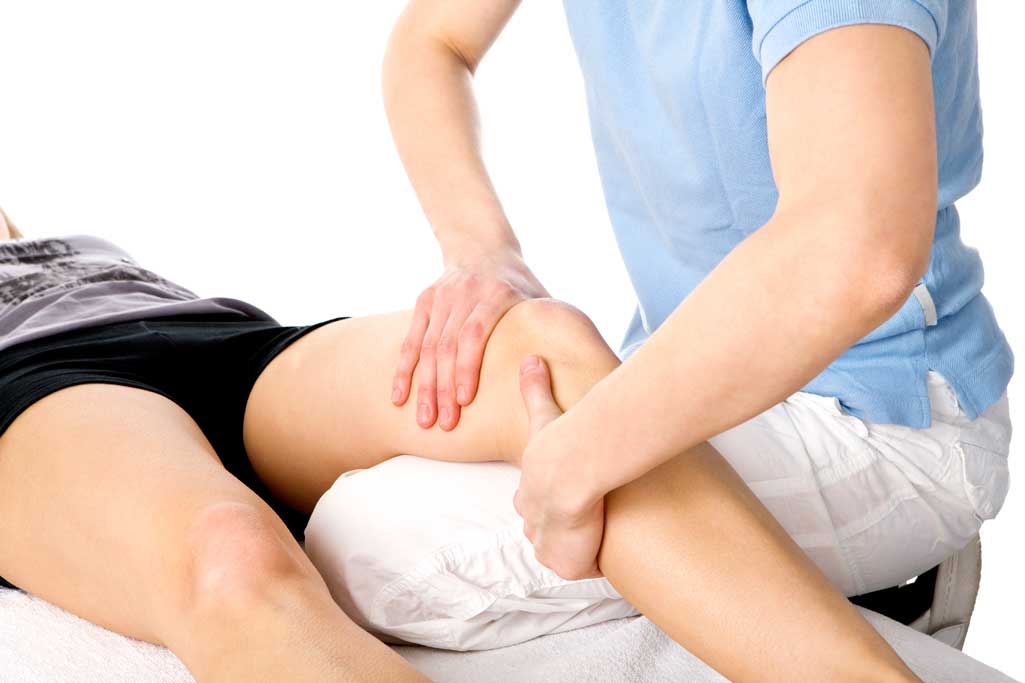Sports Physiotherapy
Correction Of Painful Training Gestures:
On the other hand, the persistence of pain during or after training can cause problems:
- Inflammation and premature wear of joints and tendons
- Imbalance of movement and development of compensatory gestures
- Decrease in performance
- Stopping one or more physical activities
- Loss of quality of life
Our medical and scientific expertise on the mechanics of movement and pathologies of the locomotor system allows us to accurately assess your training actions. The objective is to help you correct imbalances and faulty actions that cause your symptoms.

Resuming Training Following Injury
Are you worried about starting or resuming physical activity after an injury?
Want to resume your training or begin a fitness program safely after an injury?
Want to avoid hurting yourself again?
Following a detailed assessment of your condition, we will answer your questions and teach you how to safely start or resume training:
– what can you do and not do?
– what are the limits that you must respect?
– are there any particularly recommended exercises based on your injury?
– should you avoid certain exercises?
– how to properly perform your training actions to recover well?
– what are the means to take to avoid injuring yourself again?
Correction of muscle and joint deficits for injury prevention and performance optimization
This service is intended for people who wish to obtain a precise evaluation of their muscular imbalances, their joint dysfunctions and their posture. The correction of these deficits can be carried out in order to prevent injuries, optimize sports performance, improve daily physical fitness or reduce chronic pain, training pain or work-related pain.
The evaluation will highlight:
– your muscle weaknesses
– your lack of muscle and joint flexibility
– joint instabilities
– neuromuscular control deficits
– movement control deficits
– compensatory gestures
– inadequate postural habits
– anatomical variations and bone deformations
Our approach is based on the teachings of the following people and organizations:
Dr. Stuart McGill
Low Back Disorders: Evidence-Based Prevention and Rehabilitation
Ultimate Back Fitness and Performance
SMARTERehab
http://smarterehab.dyndns.org/
Dr. Shirley A. Sahrmann
Diagnosis and Treatment of Movement Impairment Syndromes
Movement System Impairment Syndromes of the Extremities, Cervical and Thoracic Spine
David Lindsay, BHMS, BPthy, Msc, CAT (C)
New Advances in Hip Rehabilitation: a Scientific Educational Program for Physical Therapists
Kevin E. Wilk, PT, DPT
Musculoskeletal Biomechanics Research Laboratory
Dr. Christopher M. Powers
Advanced Evaluation and Treatment of the Shoulder
http://pt2.usc.edu/labs/mbrl/profiles/powers.html
Selective Functional Movement Assessment
Mckenzie Institue International
The McKenzie Method® – Mechanical Diagnosis and Therapy®
Kinetacor
Physical Therapy Education
Functional Dry Needling ™
American Dry Needling Institute Institute
Integrative Dry Needling, Orthopedic Approach ™
Integrative Approach
Biomedical acupuncture for Pain Management.
Biomedical acupuncture for Sports and trauma rehabilitation. Dry Needling techniques
Johanne Tardif, pht, M.Sc
Rehabilitation Department, Laval University
